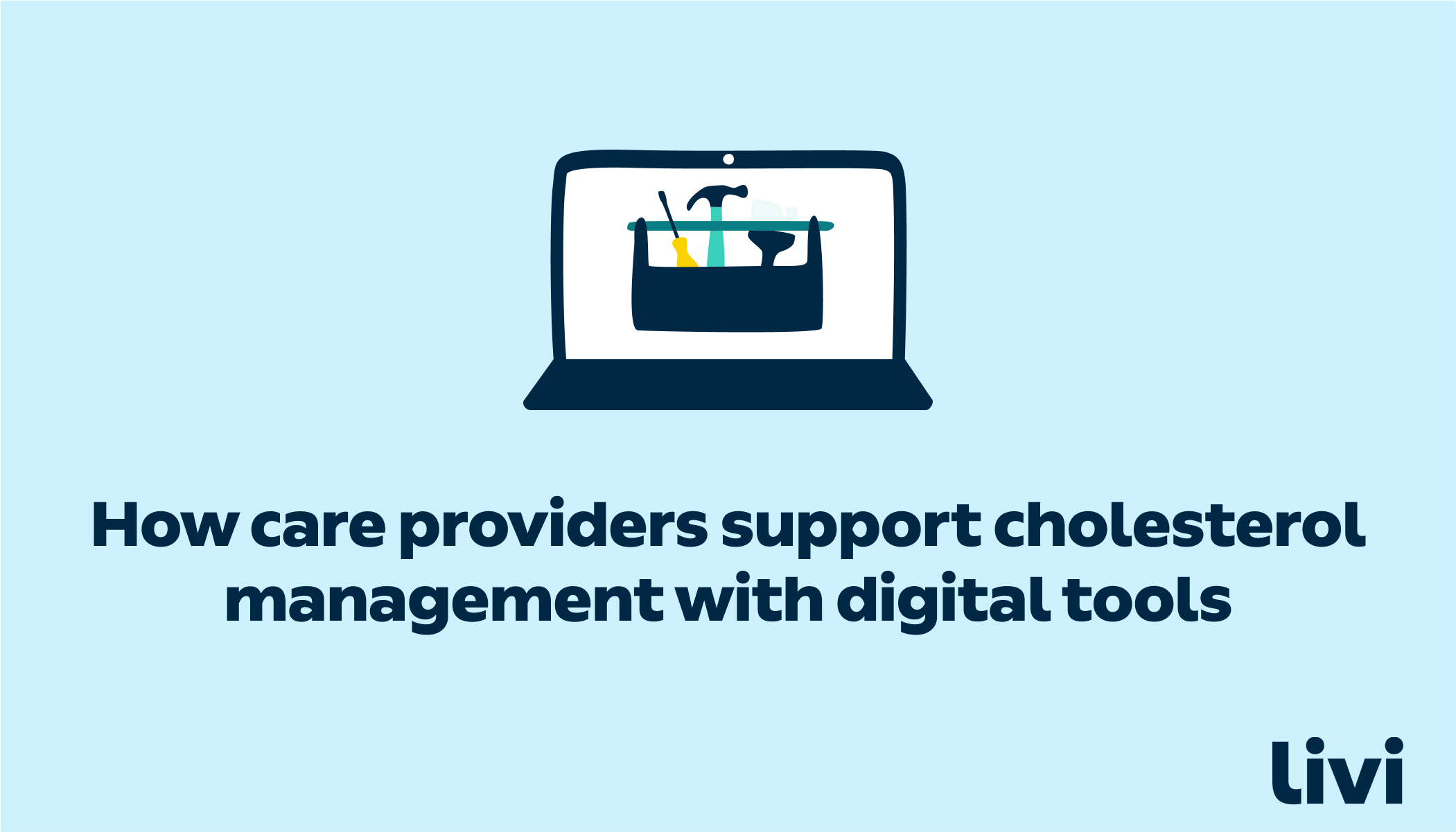Today, high cholesterol remains a leading driver of chronic health issues such as heart disease, diabetes and stroke. Early intervention and prevention is essential.
In the age of digital advancements, technology has become a powerful ally in cholesterol management. With the help of technology, it is now possible for individuals to measure, monitor, manage and lower their cholesterol levels effectively. While healthcare providers can also proactively target and treat high cholesterol.
In this short-read, we look at how digital platforms can support care providers to control and lower cholesterol levels across their patient populations, ultimately promoting heart health and overall well-being.
Supporting dietary changes
Healthy eating is associated with supporting individuals to lower cholesterol levels. However, sustaining dietary changes over the long term can be a major barrier to success. In the fight against cholesterol, digital platforms that integrate education, meal planning, and even ordering of healthy food hold much promise in enabling behaviour change.
Indeed, in a study where participants used such a platform over six years, almost 35% demonstrated improved lipids, returning to normal levels (1).
Enabling remote management
Ongoing monitoring of cholesterol can present significant opportunities for early intervention. But regular visits to a local practice or clinic can not only be a burden for the individual, they can also be time consuming and costly. Remote programmes now offer the possibility to track and monitor individuals’ cholesterol in an efficient and effective way outside of physical settings.
In a research study of more than 10,000 participants, one programme delivered significant reductions in LDL-cholesterol on average of 37 mmHg. Key elements of the programme included communication through patient portals, text, email, and phone calls (2).
Building healthy habits through gamification
Educational games and interactive tools can also make learning about cholesterol fun and engaging, especially for younger audiences.
Gamification techniques may encourage users to explore various aspects of heart health, motivating them to make positive lifestyle changes. These tools can be particularly effective in raising awareness among children and adolescents, establishing healthy habits early in life.
While for adults, the incentivisation of healthy behaviours through such platforms can also make an impact.
Access to education and support
Digital platforms can also serve as vast repositories of education.
Websites, mobile apps, and social media channels can provide accessible and reliable information about cholesterol, its types, risk factors, and preventive measures. This readily available knowledge can empower individuals to make informed lifestyle choices and seek appropriate medical advice.
While online forums and digital platforms may provide a platform for individuals to connect with others facing similar challenges. Virtual support groups can offer emotional support, share experiences, and valuable tips for managing cholesterol. This sense of community can motivate individuals to adhere to their plans and adopt healthier lifestyles.
Want to learn more?
Livi’s new whitepaper, obesity and the promise of digital health explores how digital technology can support healthy lifestyle changes within a holistic care pathway.
As Europe’s leading digital-physical healthcare provider, we’re committed to the long-term management of chronic disease and its many drivers. Our long-standing and successful obesity programme, first launched in Sweden, is now expanding globally across Europe.
To find out more, read the whitepaper, contact our team via email partnerships-uk@livi.co.uk or book a meeting.
References
JMIR Cardio. Evaluating the Impact of a Digital Nutrition Platform on Cholesterol Levels in Users With Dyslipidemia: Longitudinal Study. Available at: ncbi.nlm.nih.gov/pmc/articles/PMC8411435/.
JAMA Cardiol. Results of a Remotely Delivered Hypertension and Lipid Program in More Than 10 000 Patients Across a Diverse Health Care Network. Available at: jamanetwork.com/journals/jamacardiology/article-abstract/2798467.


